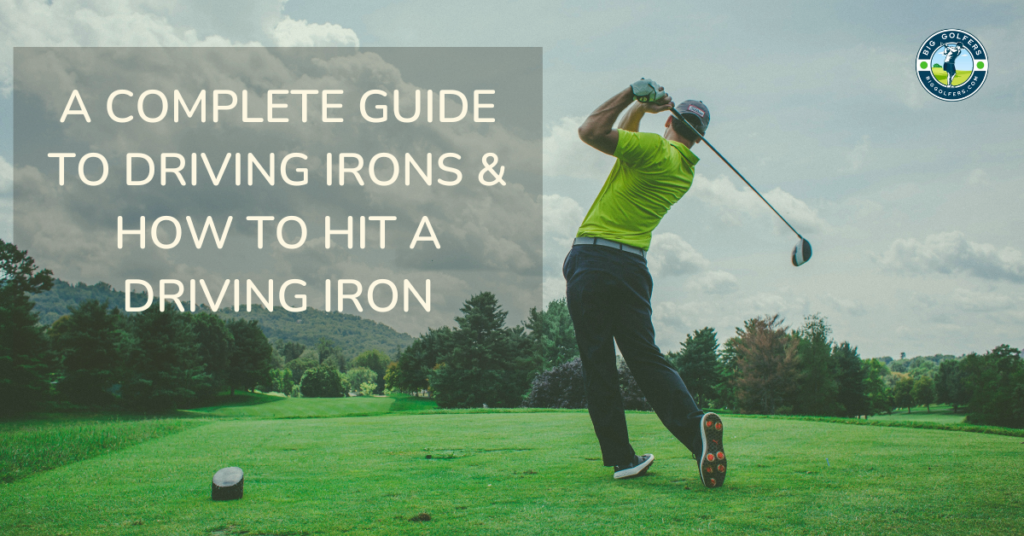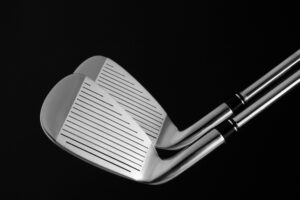

A Complete Guide to Driving Irons & How to Hit a Driving Iron
-
By Big Golfers
Imagine that you are on the tee box with the fairway sprawled out in front of you like a green carpet. With the early dew still fresh on the grass, reaching for your driver, you see there are hiding dangers and the fairway is narrow. You pull out your driving iron—your reliable buddy that guarantees precision and control. The golf ball moves down the golf course in a straight and exact route as you set your position and swing, and you feel the strong contact. This situation encapsulates the main reason driving irons have grown to be a popular item in the golfer’s repertoire. To help you out and give you more insight into the workings of the driving iron. From benefits to tips and tricks, we’ll cover all you need to know about driving irons in this in-depth tutorial.
It’s crucial for a novice to understand the Driving Iron’s genuine primary function. These are nothing more than a particular kind of golf club that combines the control of an iron with the distance of a fairway wood. Utilized most often off-the-tee or on long approach shots when accuracy is essential. In this case, the clubs’ compact heads and low loft (usually between 16 and 19 degrees) resulted in a more penetrating ball trajectory.

They have undergone significant alteration over the years. Early types were really just long irons; modern driving irons incorporate advanced technology including hollow constructions, perimeter balancing, and incredibly durable face materials. Hence, driving irons are now more forgiving and simpler to hit than they were in the past thanks to these improvements.
Choose the Best Driving Iron for your style of play
To choose the best driving iron for your needs and game, take into account a few things before you start :
1. Firstly, Lofts for driving irons normally range from 16 to 19 degrees. Your desired distance and swing speed will determine which loft is best for you. Lower lofts create a more penetrating ball trajectory and are simpler to hit. Higher lofts are more forgiving.
2. A vital part of every golf club is the driving iron shaft. The shafts for driving irons are often made of steel or graphite. Although graphite shafts are more lightweight and can aid in accelerating swing speed, steel shafts provide more ball feedback and control. So, when selecting a shaft, take your preferences and swing type into consideration.
3. To choose which design best fits you, compare Clubhead Designs as well. Look for a driving iron that has a style that appeals to you and gives you the assurance you want when driving on grass. Even though some models have a more accommodating cavity-back shape, others have a more conventional blade-like form. However, if you’re not a professional player, going with a more forgiving driving iron might still be advantageous. Off-center impacts can be lessened by using clubs with perimeter weighting and a bigger sweet spot.
4. When it comes to golfing, brand and model do matter if quality is your goal. Nonetheless, just as importantly, consider the brand and model that most closely matches your playing style. It’s always a good idea to try out a few different options before settling on one. For novice golfers, many golf shops provide sample clubs or fitting sessions to help you choose the perfect driving iron.
Utility Iron and Driving Iron Are not the same!
Driving irons and utility irons are interchangeable and seen as one and the same. This is incorrect, though, as the two differ somewhat from one another. Often referred to as a utility iron, a hybrid iron is designed to be versatile and may be used for purposes other than straight ironing. Their more forgiving form and somewhat higher loft than driving irons make them easier to hit from the rough or fairway. Driving irons, on the other hand, are designed specifically for long, straight swings that are intended for distance. Compared to utility irons, they offer superior control and a lower, deeper ball trajectory, but they are less forgiving. They are therefore ideal in windy conditions or when accuracy is essential.

The Benefits
Usually utilized off the tee, but in some circumstances, they can also be useful for long approach shots or even off the fairway. They are an invaluable complement to any golfer’s bag because of their versatility. Moreover, as Consistency is crucial for a lot of golfers; Driving irons are a dependable solution for people who have trouble with a driver’s inconsistent performance. Improved overall performance and more consistent strikes might result from the shorter shaft and more compact head. When talking about the two main advantages of utilizing a driving iron; control and precision is what everyone thinks about. The improved control that a driving iron provides is one of its main advantages. A driving iron enables for a greater precision in shot placement than the driver type, which can be harder to manage. These have a more penetrating ball flight than hybrids and fairway woods but at a lower altitude. Similarly, when playing in windy circumstances, when a high ball flight would be more likely to be blown off course, driving irons can be very especially helpful.
Best use of the Driving Iron
To get the most out of a driving iron, you must know when to use it. Here are a few situations in which a driving iron can be especially useful:
A driving iron can assist keep the ball in play and prevent hazards when accuracy matters more than distance, like on narrow fairways.
It is simpler to keep the ball on target in windy circumstances because of a driving iron’s lower ball flight, which can assist counteract the impacts of high gusts.
A driving iron may provide you the distance you need on lengthy par-3 courses while also giving you the control you need to hit the green.
A driving iron may be a very useful weapon for difficulty shots where a low, penetrating ball flight is required to escape from beneath trees or other hurdles.
Understanding How Far Should You Hit a Driving Iron
When utilizing a driving iron, distance is not the only thing to take into account. Don’t get too wrapped up in attempting to hit it as far as you can because this club’s main advantages are accuracy as well as control. Concentrate on maintaining good contact and executing repeatable strokes. The loft of the club, your total skill level, and your swing speed are some of the variables that affect how far you can push a driving iron. It can be struck from 180 to 230 yards away on average. Higher swing speed players, nevertheless, could be able to hit farther than this range. Compared to other clubs, hitting a driving iron effectively necessitates a somewhat different technique.
Pointers to help you get the most out of your driving Swing:
1. The initial Arrangement
Establish a strong foundation. Put the ball in your stance slightly ahead, around where you would put a fairway wood. This makes it more likely that you will hit the ball with your downward stroke.
2. Stance and Grip
Place your feet shoulder-width apart and maintain a steady posture. You want to have a solid but not too tight grasp. To encourage a downward strike, make sure your hands are in front of the ball during the address.
3. Making it effortless with a Follow Through:
The most important part is to pay attention to a fluid, deliberate swing. In contrast to an average driver, an iron needs a more sweeping action. To get that piercing ball flight, strive for a shallow, descending strike rather than aiming to hit high on the ball.
4. Evaluating the Path
Keep your balance well and follow through completely. A good finish can assist while also guarantee that you’ve made good contact and that your shot has been as accurate and far away as possible. But, just as in any club swing, preparation is essential. Practice your driving iron shots at the driving range while paying attention to the way the ball travels, and change your technique as necessary to increase accuracy.
The Beginners's ultimate companion
A golfer’s bag should include driving irons because they provide a special combination of control, accuracy, and variety. A driving iron may help you accomplish your objectives whether you’re negotiating turbulent conditions, maneuvering through narrow fairways, or simply seeking a dependable alternative off the tee. Your actions can improve your game and gain the confidence that comes with mastering this versatile club by knowing the distinctions between driving irons and utility irons, appreciating the advantages of using one, and obviously, learning how to select and hit the best driving iron for you.
Next time when you have a difficult tee shot, always think about using your driving iron. With practice and the right approach, you’ll be hitting long, straight, and controlled shots that set you up for success on the course. You can hit long, straight, and deliberate shots that position you for accomplishment on the course with sufficient practice and the appropriate mindset.
Related Posts


